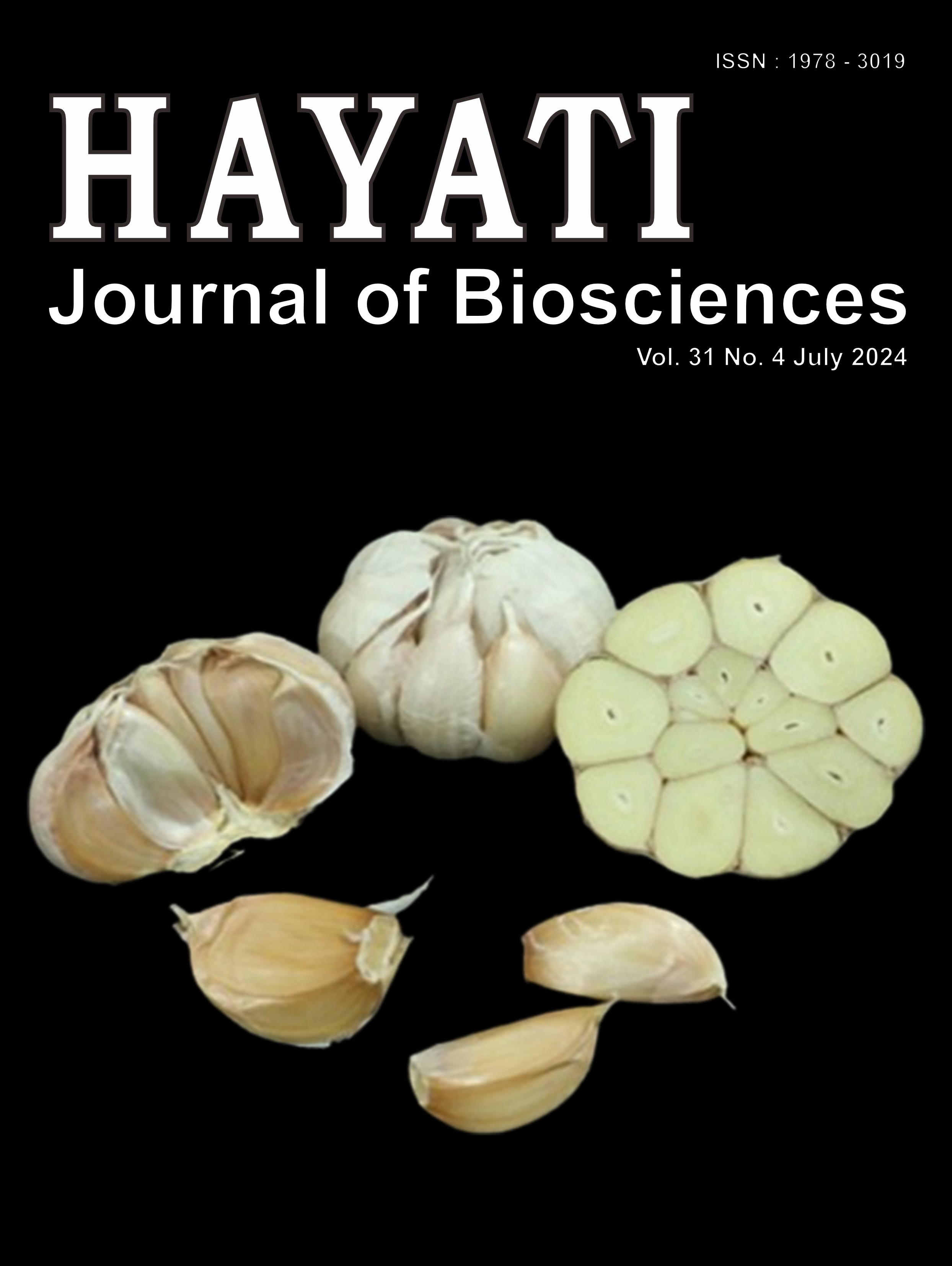The Unpopular Edible Bolete (Phlebopus portentosus) in Indonesia
Abstract
Phlebopus portentosus (Berk. and Broome) Boedijn was firstly constructed from the collection of Indonesia in 1951. To date, the subsequent collection of this ectomycorrhizal (ECM) fungi has not been done in Indonesia. In addition, the utilization information of this edible mushroom as food is not popular for the country. The goal of our work was to update the current collection, provide the morphological and molecular data, and promote the utilization of this edible mushroom in Indonesia. Fresh fruiting bodies were evaluated for morphological and molecular evidence. The basidiomata were analysis on the basis of the morphological and molecular evidence. The phylogenetic tree was constructed following the rDNA-ITS 1/2 sequence. P. portentosus was verified by morphological and phylogenetic studies combined. The indigenous people in the research site use this wild edible mushroom for self-consumption and sell it to local market. Phlebopus portentosus BO24626 was solitary to connate, boletoid basidioma, yellowish to greenish brown pileus and stipe, yellowish hymenophore, clavate stipe, club shaped basidia, oval to subglobose basidiospores, cystidia present. The absence of sponge-like tissues and the occurrence of sterigmata distinguished our specimens from the similar morphological species P. spongious. The lack of reddish stipe distinguished our specimen from P. roseus. In addition, the presence of hymenial cystidia delimits our specimens from P. colossus. The inferred phylogenetic tree nested our specimen in the group of P. portentosus (sister to P. spongiosus). The ITS sequence of our specimen is now deposited at GenBank and can be applied to upcoming research of P. portentosus.
Downloads
Copyright (c) 2024 Ivan Permana Putra, Oktan Dwi Nurhayat, Mada Triandala Sibero, Rudy Hermawan, Michael Aditya Kristanto

This work is licensed under a Creative Commons Attribution-NonCommercial 4.0 International License.
HAYATI J Biosci is an open access journal and the article's license is CC-BY-NC. This license lets others distribute, remix, tweak, and build upon author's work, as long as they credit the original creation. Authors retain copyright and grant the journal/publisher non exclusive publishing rights with the work simultaneously licensed under a https://creativecommons.org/


















.png) IPB University
IPB University Department of Biology
Department of Biology The Indonesian Biological Society
The Indonesian Biological Society 

